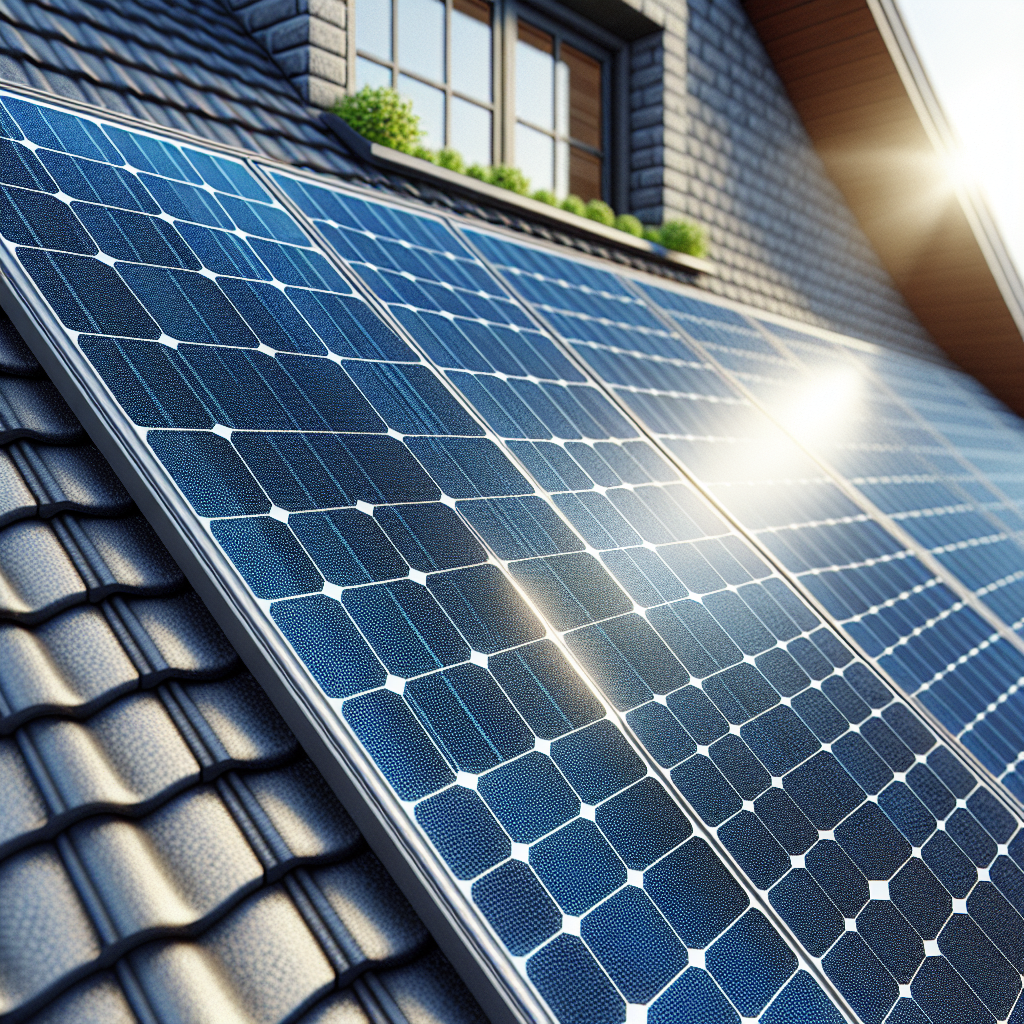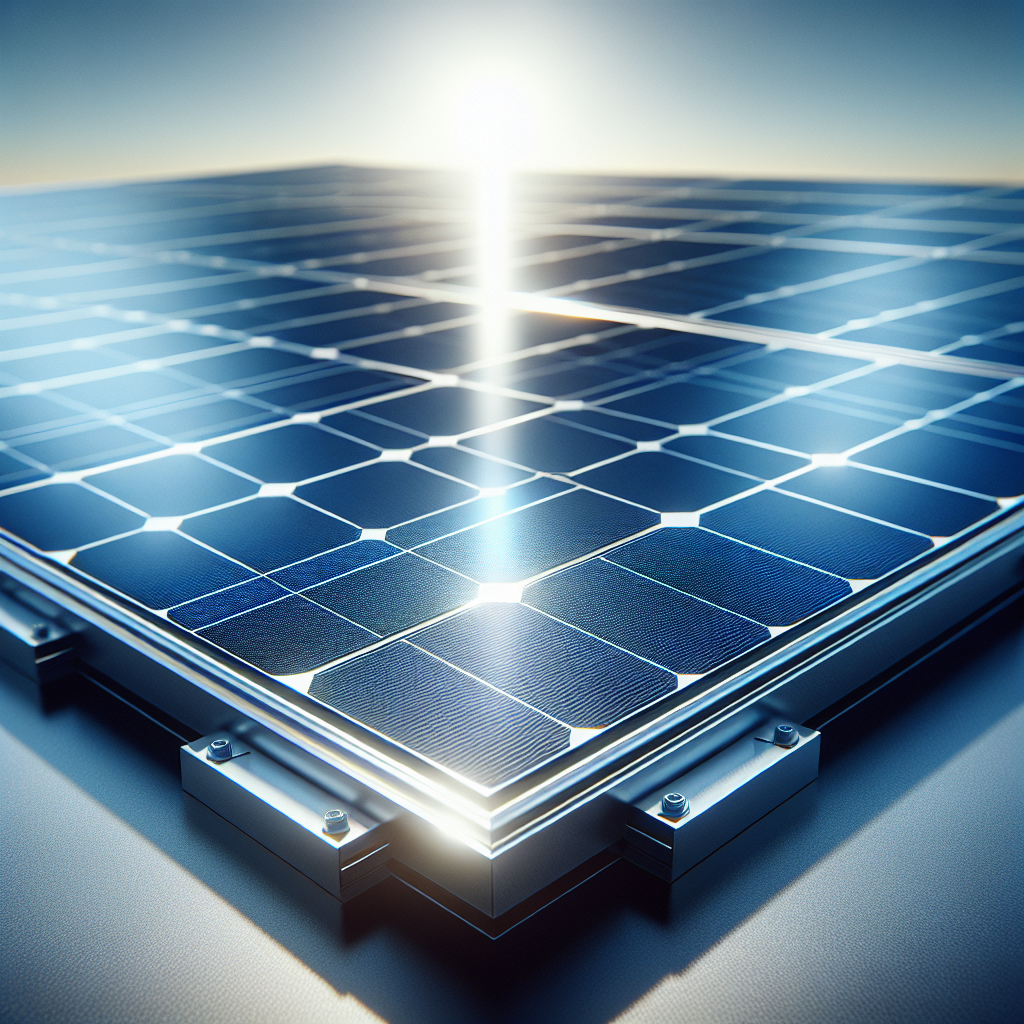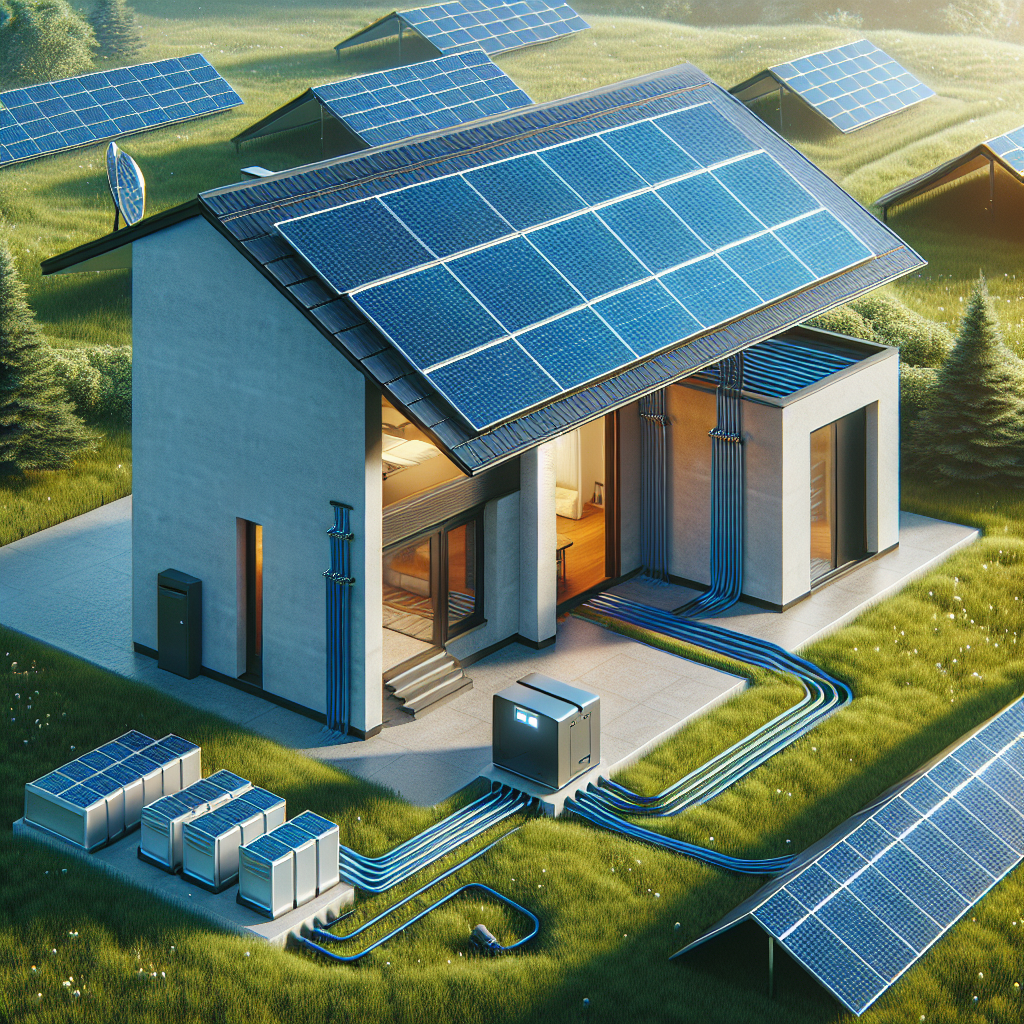Photovoltaic: The Powerhouse of Modern Construction
Stepping into the realm of construction basics, one term that often pops up is ‘Photovoltaic’. This might sound complex, but in essence, it describes the conversion of light into electricity.
Applicable to construction, you’ll find photovoltaic systems primarily in the design of solar panels. These devices harness sunlight, offering a renewable energy alternative.
The use of such energy-efficient methods can greatly reduce our carbon footprint, transforming the way we build our world.
Table of Contents

Understanding “Photovoltaic” in Simple Words
Defining Photovoltaic
Photovoltaic, often shortened to PV, refers to the conversion of light energy, typically from the sun, into electrical power using photovoltaic cells or solar panels.
How Does Photovoltaic Work?
Photovoltaic systems operate on the principle of the photovoltaic effect, where sunlight is converted into direct current (DC) electricity.
These systems consist of multiple solar panels that are mounted on a structure, like a roof or a ground-mounted frame, and connected to an inverter to convert the DC electricity into alternating current (AC) for use in homes or businesses.
Key Components of a Photovoltaic System
- Solar Panels: Made of photovoltaic cells that capture sunlight and convert it into electricity.
- Inverter: Converts DC electricity from the panels into usable AC electricity for appliances and lighting.
- Mounting Structure: Supports and positions the solar panels to maximize sunlight exposure.
- Battery Storage (Optional): Stores excess electricity produced for use when sunlight is not available.
Benefits of Photovoltaic Systems
| Benefits | Explanation |
|---|---|
| Renewable Energy Source | Utilizes sunlight, which is abundant and sustainable. |
| Cost Savings | Reduces electricity bills by generating your own power. |
| Environmentally Friendly | Reduces carbon footprint and reliance on fossil fuels. |
| Energy Independence | Provides a reliable power source, especially in remote areas. |
Conclusion
Photovoltaic systems offer a clean, sustainable, and cost-effective way to generate electricity for residential, commercial, and industrial purposes.
By harnessing the power of sunlight, these systems contribute to a greener future and energy independence.

Breaking Down the Distinction: Solar vs. Photovoltaic
Understanding Solar Energy
Solar energy, in broadest terms, refers to the energy derived directly from the Sun. This form of energy can be harnessed and utilized in several different ways, covering various technologies – from solar thermal heating systems to solar architecture.
Solar energy serves as a generalized term that encompasses different methods of converting sunlight into useful energy.
How Solar Energy is Captured and Transformed
The two most common methods of harnessing solar energy are through solar thermal systems and solar photovoltaic systems.
In solar thermal systems, sunlight is used to heat up a fluid (usually water, but sometimes oil or another liquid), which can produce steam to power a turbine and generate electricity.
This is different from photovoltaic systems, as no conversion of light into electricity takes place. Rather, heat is the primary means of energy creation.
Comparing Solar Energy and Photovoltaic
The key difference between solar energy and photovoltaic ultimately comes down to the nature of the transformation process of sunlight.
While solar energy can include any system that transforms sunlight into usable energy (which can be through the method of heating like in solar thermal systems), photovoltaic specifically refers to the direct conversion of sunlight into electricity through the use of photovoltaic cells, typically assembled in solar panels.
Important Considerations
- Different Applications: While both methods harness the power of the sun, they have diverse applications. For example, solar thermal systems are often used for heating purposes, like providing warm water in homes, while photovoltaic is utilized for generating electricity.
- Efficiency Rates: The efficiency of solar panels may vary depending on the specific technology used. Solar thermal systems can reach higher efficiencies in collecting and converting solar heat energy, while photovoltaic systems have the potential for overall higher energy production since they can generate power even during periods of indirect sunlight.
- Climatic Considerations: Photovoltaic systems can work in diverse climatic conditions, for both direct and indirect sunlight—making them suitable even in cooler and less sunny climates. In contrast, solar thermal systems may require more consistent and direct sunlight exposure to perform efficiently, thereby being more beneficial in warmer, sunnier climates.
Conclusion
In conclusion, solar energy and photovoltaic are both valuable renewable energy technologies, each with its own specific advantages and applications. Understanding the differences between them can help homeowners and businesses make informed decisions about the most suitable choice for their needs, taking into account factors such as geographical location, energy demand, and budget.

Photovoltaic: Shining Light On Real-world Examples
Photovoltaic in Action: Residential Solar Panels
One common real-life example of photovoltaic electricity is residential solar panels. These are small-scale photovoltaic systems installed in homes to produce electricity for household use.
How Residential Solar Panels Work
A residential solar panel arrangement usually consists of arrays of both solar modules and racks that are engineered to convert sunlight hitting the panels into electricity. When exposure to sunlight occurs, the photovoltaic cells take the solar energy and convert it into direct current (DC) energy. The DC energy then goes through an inverter, turning it into alternating current (AC) energy, which can power household appliances and systems.
The User Journey: From Installation to Electricity Generation
- Consultation and assessment: A solar provider conducts an on-site assessment and consults with the homeowner about their electricity consumption and energy goals.
- Design and installation: Based on the assessment, the provider designs a system that fits the homeowner’s energy needs and home design. Installation includes mounting solar panels in an optimal position for sunlight exposure and connecting the system to the home’s electrical grid.
- Permitting and grid connection: The system undergoes inspections and the homeowner applies for necessary permits. Once approved, the utility company connects the system to the grid.
- Electricity generation and monitoring: The solar panels convert sunlight into electricity for home use. The provider typically offers a monitoring system so the homeowner can keep track of production and usage.
Residential Solar Panels: Perks and Considerations
| Advantages | Considerations |
|---|---|
| Energy Savings: Homeowners can significantly cut their electricity costs due to the energy generation from solar panels. | Initial Costs: There can be substantial upfront costs for purchasing and installing solar panels, though federal tax credits and local incentives can offset this. |
| Reduced Carbon Footprint: By replacing grid electricity with renewable solar energy, homeowners decrease their carbon emissions. | Roof Condition: The roof must be in good condition and properly oriented to accommodate and optimize solar panel performance. |
| Increased Property Value: A home equipped with solar panels often has a higher resale value. | Sunlight Exposure: Photovoltaic efficiency depends on the amount of sunlight, so homes in areas with frequent cloud cover or shade may see less significant benefits. |
Conclusion
A residential photovoltaic system, such as solar panels, is a practical example of how photovoltaic electricity works.
These systems harness sunlight to generate electricity, providing a sustainable energy source while offering homeowners significant benefits, including cost savings, a lower carbon footprint, and increased property value.
Beyond Domestic Use of Photovoltaics
Photovoltaics in Commercial and Industrial Sectors
While residential photovoltaic systems, like solar panels, hold a significant place in renewable energy, commercial and industrial photovoltaic solutions are also worth exploring.
Here, photovoltaic systems play an indispensable role, ranging from power supply for office buildings to providing energy for large-scale industrial complexes.
Key Features of Commercial and Industrial Photovoltaic Systems
- Size: In contrast to residential systems, commercial and industrial photovoltaics are generally larger and more powerful, designed to meet the higher energy demands of businesses and industries.
- Diversity of Installation: Space is less of a constraint in commercial installations, with opportunities for solar arrays on not just rooftops, but carports, ground mounts, and side walls.
- Advanced Monitoring: These systems often come with sophisticated monitoring systems to keep track of energy production, usage, and maintenance requirements.
Commercial and Industrial Photovoltaics: Advantages and Considerations
| Advantages | Considerations |
|---|---|
| Energy Cost Reduction: These photovoltaic systems substantially reduce energy overhead costs. | Initial Investment: The upfront costs can be high, but the typical ROI period is 5-10 years. |
| Carbon Footprint Reduction: Switching to renewable energy sources significantly reduces corporate carbon footprint. | Space requirements: Depending on the energy need, larger space might be needed to deploy enough panels. |
| Corporate Social Responsibility (CSR): Embracing renewable energy aligns with CSR goals and enhances brand image. | Regulatory Constraints: In some regions, businesses might face regulatory constraints for installing large-scale photovoltaic systems. |
Conclusion
Commercial and industrial photovoltaic systems provide effective solutions for businesses and organizations to drive down their energy costs, reduce carbon emissions, and further their corporate social responsibility initiatives. While sizable upfront investment and regulatory considerations can serve as challenges, with a well-planned strategy and execution, the benefits typically outweigh these hurdles.

Future of Photovoltaics: Advancements and Potential
Next-generation Photovoltaics
As research and development in photovoltaics continue, the future promises even more efficient and versatile photovoltaic solutions. Some notable emerging technologies include perovskite solar cells, organic photovoltaics, and quantum dot solar cells, offering promising enhancements in efficiency, flexibility, and cost-effectiveness.
Future Photovoltaic Installments: Envisioning Architectural Integration
The concept of Building-Integrated Photovoltaics (BIPV) presents a new vision for embedding solar technology into building materials themselves, such as windows or façade cladding. This integration potentially allows every building surface to act as an electricity generator, offering significant potential for future urban photovoltaic installations.
Final Thoughts On Photovoltaics
Photovoltaics technology has significantly evolved and expanded over the years, and continues to reinforce its place as a cornerstone solution for sustainable energy generation. With progressive advancements and continuous research, the potential for photovoltaics is bound to reach new horizons, propelling the world towards a more sustainable, greener future.
In conclusion, the concept of photovoltaic systems, commonly known as PV, provides a practical solution for converting solar energy into electricity through the use of solar panels and inverters. Through the photovoltaic effect, these renewable energy systems offer an environmentally friendly and economically beneficial alternative to traditional power sources.
The key components of a photovoltaic system, including solar panels, inverters, mounting structures, and optional battery storage, work together to harness sunlight and produce usable electricity. By embracing photovoltaic technology, individuals and businesses can reduce their carbon footprint, lower energy costs, and achieve energy independence.
Overall, photovoltaic systems represent a significant step towards a sustainable future, offering benefits such as renewable energy generation, cost savings, environmental preservation, and reliable power supply. Embracing photovoltaic technology is not just about utilizing sunlight; it is about shaping a cleaner and more efficient energy landscape for generations to come.






